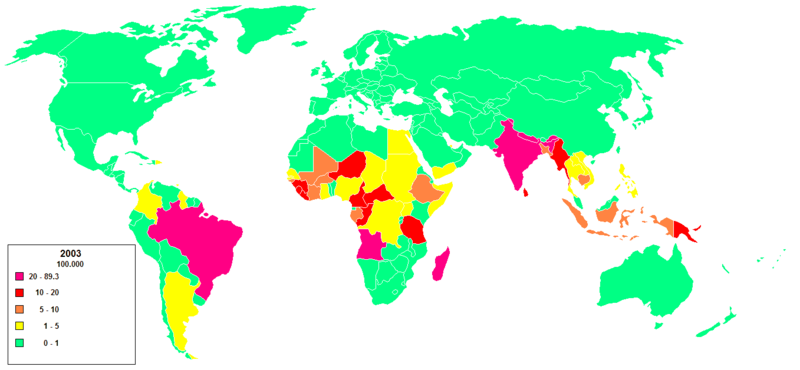Mycobacterium leprae
Treatments
A view of some of the common drugs to treat Leprosy.
Today there is treatment for leprosy patients, but until about the 1940's there was no effective medicines for the treatment of leprosy. In the 1940's, the drug dapsone first became available. It looked as though patients would rely on the drug for their entire life. However, problems soon arose when the disease acquired an antibiotic resistance, and most found the drug to be useless. It wasn't until the 1960's when other drugs became available that treatments were successful. Currently, cases are now being treated using MDT, or "multidrug therapy," which uses the drugs dapsone, rifampin, and clofazimine. Doctors found that the combination is more effective because it's more difficult to acquire an antibiotic resistance. The combination of these drugs seems to dramatically help leprosy patients as well, and after 1 month of the treatment the disease is no longer contagious in any way. Patients usually take the treatment for 1-6 months, or in some cases longer.
The side effects tend to be fairly rare, but a few cases of mild anemia, orange coloration in bodily fluids such as sweat and urine, and a darker color to the skin have been reported. Sometimes people make false assumptions when treating the disease that the medicine has stopped working. In reality, they are probably experiencing a reaction. This is not an allergic reaction, just the body's natural immune response. As the drugs are killing the bacteria, the dead remains stay in the body for a while. This may be confusing due to symptoms such as the reddening or inflammation of past lesions. The disease is NOT getting worse, it is simply the body's immune system doing it's job.
While the drugs are very effective, they can also be quite expensive. In the past, third world and underdeveloped countries have found it difficult to treat patients due to the high costs. In 1991, the World Health Assembly passed a petition to eliminate the majority of leprosy cases by 2000. With the help of this resolution and more widespread knowledge about the disease, the number of new cases found worldwide have been decreasing each year.
In order of decreasing amounts of cases: Pink, Red, Orange, Yellow Green. The most serious epidemics are currently found in India, with Brazil and Myanmar following close behind. The countries which tend to have a greater risk are those which have poor conditions such as contaminated water, poor diet, and unsanitary living arrangements.

